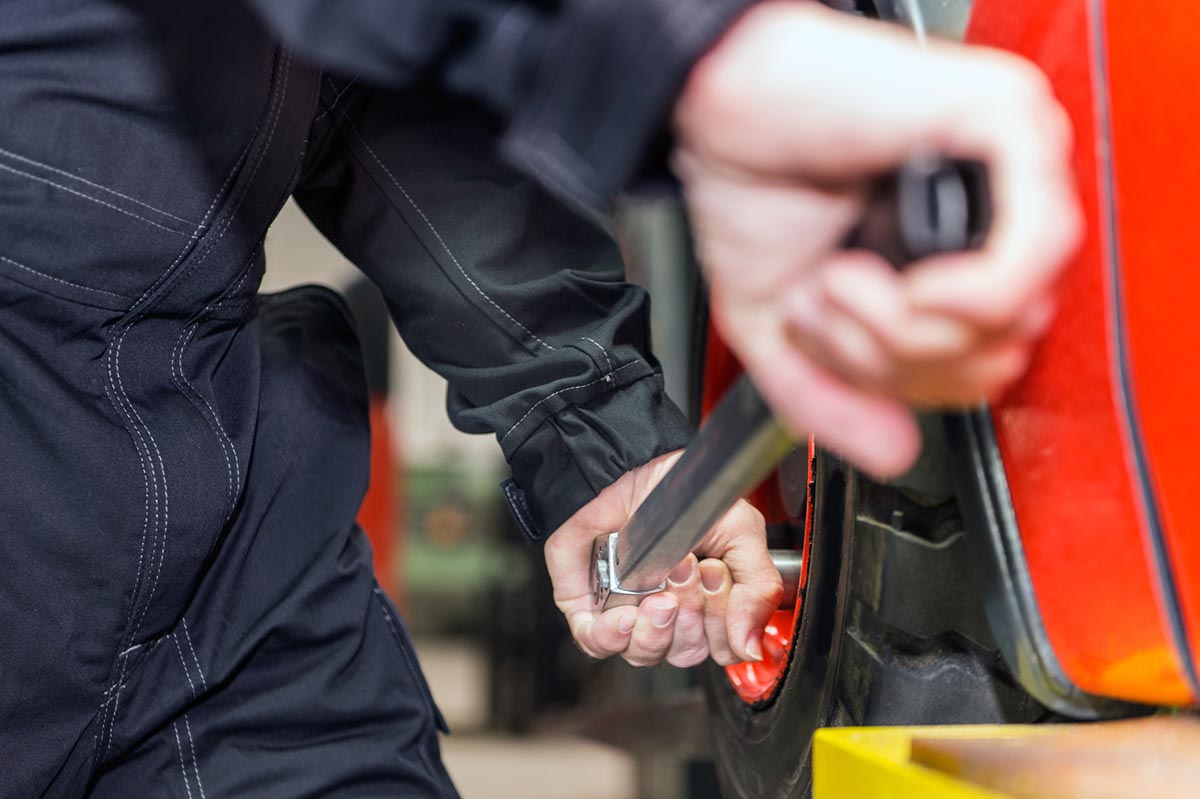

We may earn revenue from the products available on this page and participate in affiliate programs. Learn More ›
For plumbers and mechanics, torque wrenches are toolbox essentials. These wrenches apply a specific twisting force called torque to a nut, bolt, or lag screw. And many automotive or plumbing scenarios require a specific amount of torque for each application.
There are a few categories and several types of torque wrenches that tend to get the most use by automotive or plumbing experts, as well as DIYers. Ahead, find out more about these tools and the must-know details about what each type does best. Having these tools on hand means never facing a nut or bolt you can’t rotate.
1. Click Torque Wrench

The click torque wrench appears in many pros’ or DIYers’ tool boxes and a ½-inch version is a fan-favorite for basic jobs like tightening automotive lug nuts and suspension components, large bolts, and lawn mower blades. “This type of torque wrench is reliable, accurate, and gives an audible sound when the torque target has been reached,” says Chris Holte, Virtual Handyperson for Frontdoor, which is an app that connects homeowners to skilled trades.
When using a torque wrench,you can avoid over-torquing by using visual gauges or torque indicators that tell you when to stop twisting. But some jobs are in tight spaces or require reaching in a way that blocks visibility of the pressure levels. A click torque wrench is perfect for those jobs. You can preset the click torque wrench to a specific level of torque. Its internal clicking noise and a clutch mechanism are designed to stop or slip once you reach that preset value. Click torque wrenches come in various sizes and torque limits.
Best For: Hard-to-reach jobs that require a preset torque level.
Our Recommendation: Tekton ½-Inch Drive Click Torque Wrench at Amazon for $48.99.
In addition to its distinct click felt in the handle and heard audibly, the Tekton also has a reversible ratchet head that can drive in both directions.
2. Beam Torque Wrench
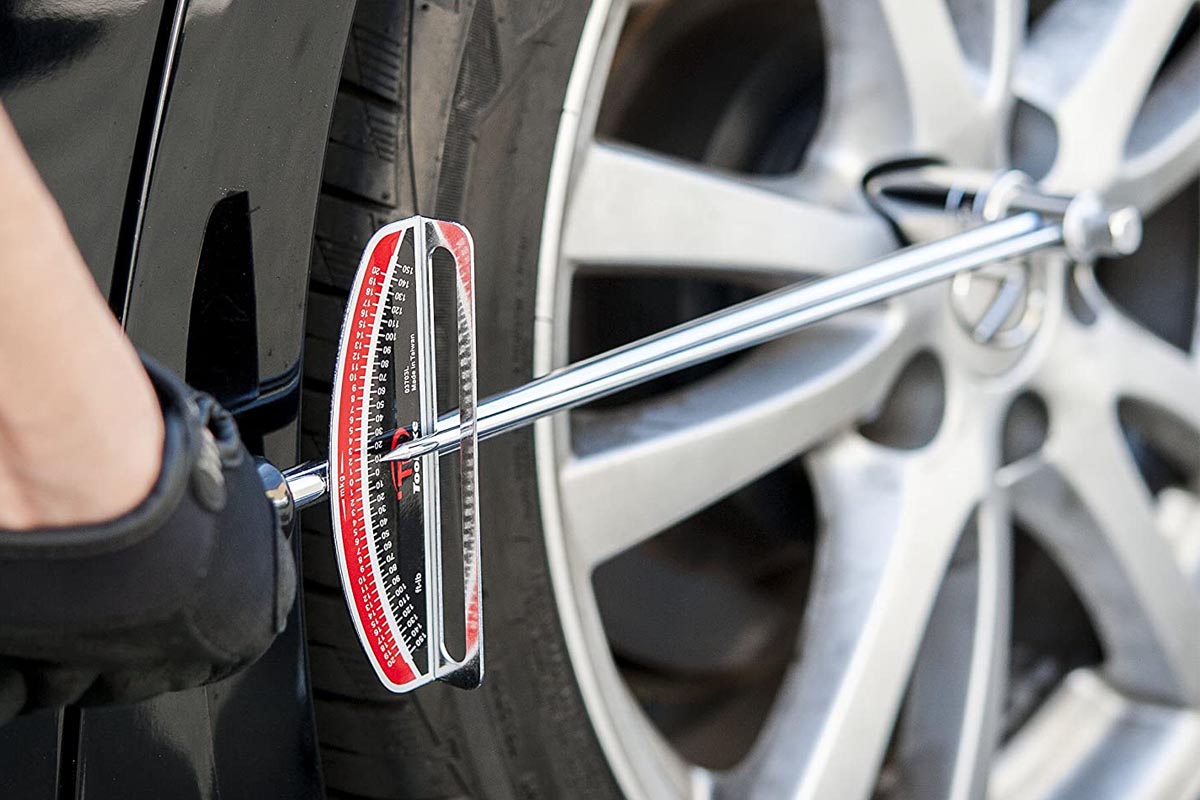
You will be hard-pressed to find an automotive enthusiast who doesn’t have a beam torque wrench in the tool box. “A beam torque wrench could be a good optional backup tool to have around,” says Holte. “This type of wrench is good for getting rough torque settings and has no mechanisms inside that could fail over time.”
A beam torque wrench allows you to fasten bolts to a precise tightness specification, as determined by manufacturers or automakers. If you have a task that requires exact torque guidelines, this easy-to-use beam wrench offers a pivoting handle. When applying pressure, the beam design translates to extreme precision at the tip of the tool. The handle, when held properly, will exert pressure at the extreme end, like a lever, only applying the preselected torque pressure. Beam torques also come with a variety of signals when reaching torque level, which is always welcome in a noisy garage environment.
Best For: Fastening to an exact tightness specification, particularly on automobiles.
Our Recommendation: Tooluxe 03703L ⅜-Inch and ½-Inch Dual Drive Beam Style Torque Wrench at Amazon for $21.97.
The Tooluxe beam-style torque wrench comes with a ⅜-inch and ½-inch anvil, offering two-size versatility in one tool. The 17-inch-long shaft is also great for more common torque applications.
3. Split Beam Torque Wrench
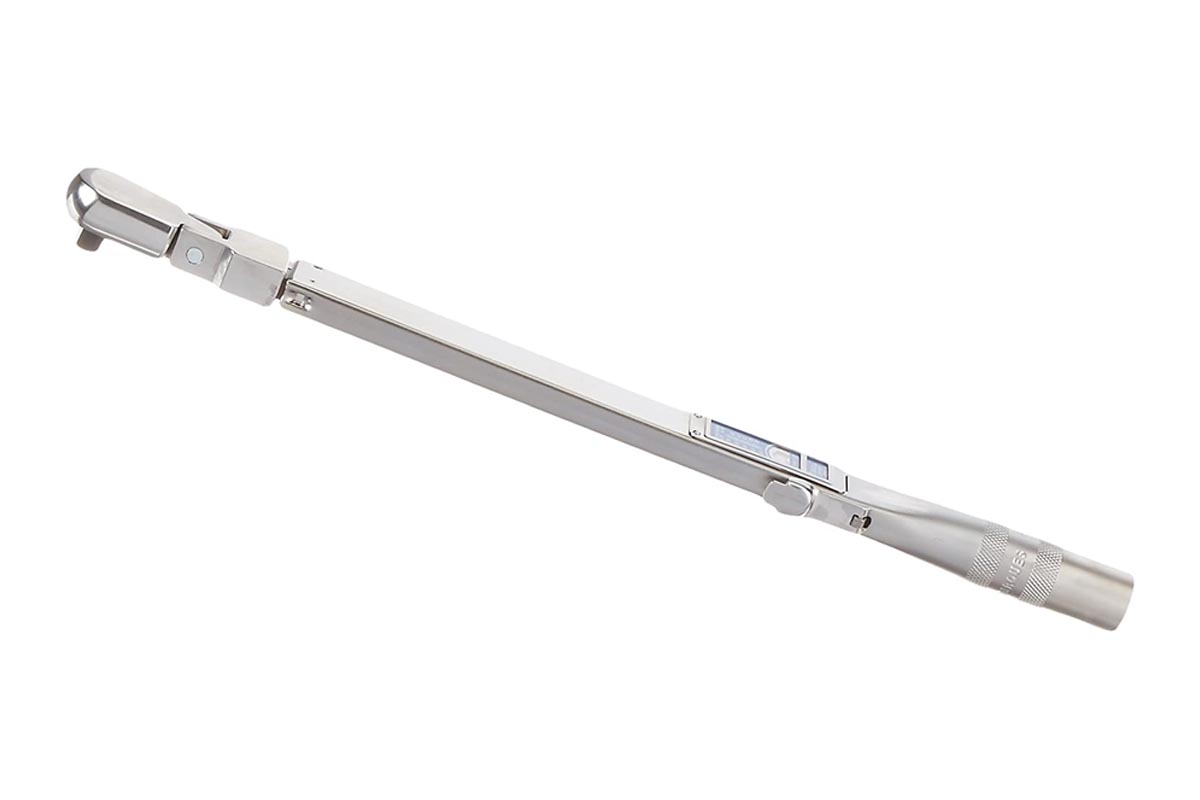
The split beam torque wrench is in the family of beam torque wrenches and similarly uses two beams for exact tightness. It works by opening the hinge and setting the desired level of torque. Some models offer a clicking function to alert the user when the setting is achieved. Most garage enthusiasts will resort to the split beam torque wrench when overtightening is not an option.
If you’re working with a fastener that requires factory-setting tightness and ultimate precision is the order of the day, then the split beam torque wrench can do the job beautifully. Before you buy, consider the accuracy and grip comfort, along with drive size and needed torque ranges. They can cost from $100 up to $800, depending on the capabilities.
Best For: Precision torquing at spec when overtightening by accident isn’t an option.
Our Recommendation: Precision Instruments PREC2FR100F ⅜-Inch Drive Split Beam Wrench with Flex Head at Amazon for $160.69.
From a brand that has garnered the respect of mechanics in commercial environments, this split beam torque wrench comes with a storage case and calibration-compliance certificate. It’s made in the U.S. and was also recognized as the best split beam in our tested guide to the best torque wrenches.
What is torque?
Even if you haven’t studied physics, you’ve likely heard of torque in the anger-describing phrase “torqued off.” It’s a fitting slang term, because many angry people get passionately twisted up and torque describes the force required for an object to twist or rotate.
4. Electronic Torque Wrench
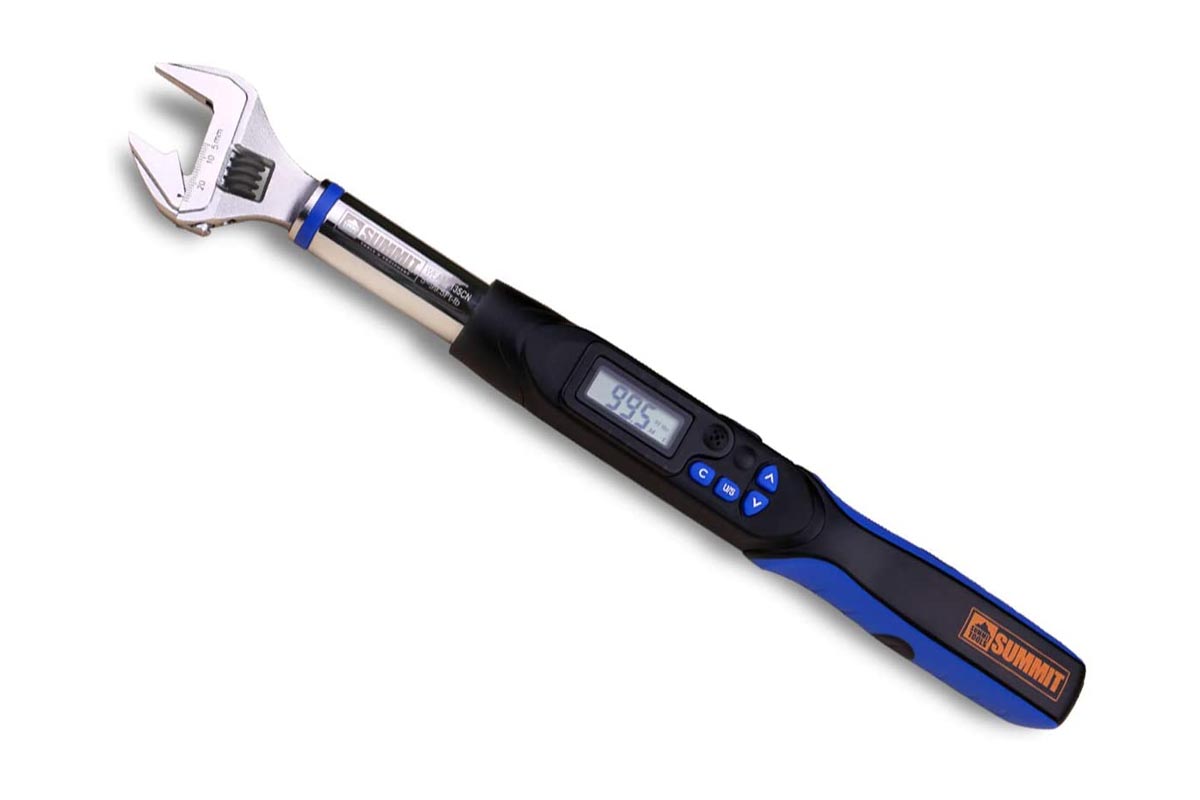
Also called a digital torque wrench, the electronic torque wrench offers a digital platform where internal multipliers merge with an electric motor—ideal for HVAC, industrial, automotive, and aerospace scenarios. “The digital torque wrench performs just like the click type but adds accuracy and convenience, and is useful on strict torque specs,” says Holte.
You can program torque levels and use an audible indicator or read the LED display as you go. Tech-savvy users can also make use of additional features, such as memory settings and the ability to upload data to a computer for use in specs and spreadsheets. The presence of delicate sensors and technology in these wrenches won’t compromise their durability or strength.
Best For: Electronically saving settings and working with digital applications like engine components, electronics, or spark plugs.
Our Recommendation: Summit Tools WEA Series Adjustable Digital Torque Wrench at Amazon for $199.98.
Made with high-quality stainless steel, this torque wrench offers multiple functions and an adjustable spanner head. It also comes with a protective case for storage.
5. Slip Torque Wrench
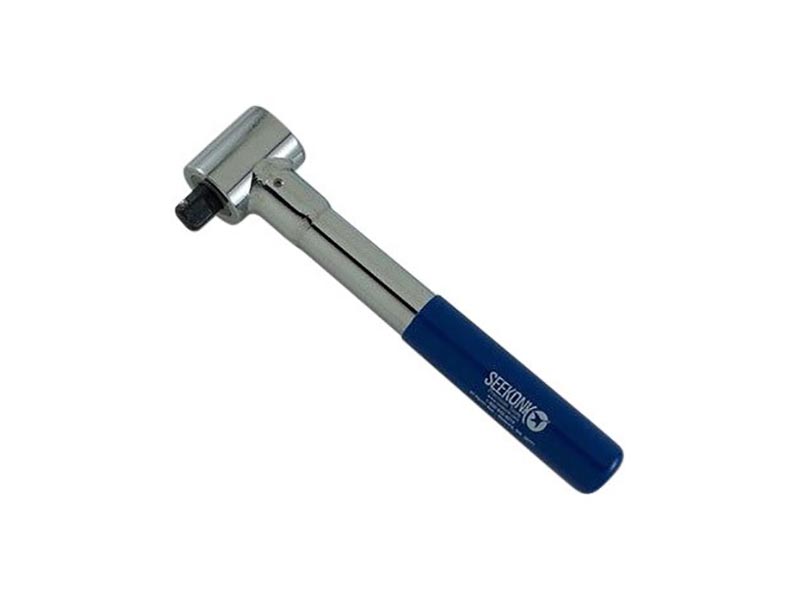
The slip torque wrench is an essential tool in the tool box, in part due to its ease of use and common application. These are great for small and low-torque jobs, including the quick release of stubborn nuts and bolts in everyday projects or delicate electrical components. Once torque levels are reached, the slip torque wrench will do as the name implies: slip and automatically release the pressure. As you’re twisting, you can build up torque again but won’t ever be in danger of overtightening beyond the wrench’s designed limits.
Best For: Low-torque jobs.
Our Recommendation: Seekonk MR-1½ Preset Slip Type Torque Wrench at Integrated Manufacturing & Supply for $340.55.
An advanced model like the Seekonk ships with a National Institute of Standards and Technology (NIST) certificate of calibration and features a minimum head diameter design, making it ideal for hard-to-reach places.
6. Hydraulic Torque Wrench
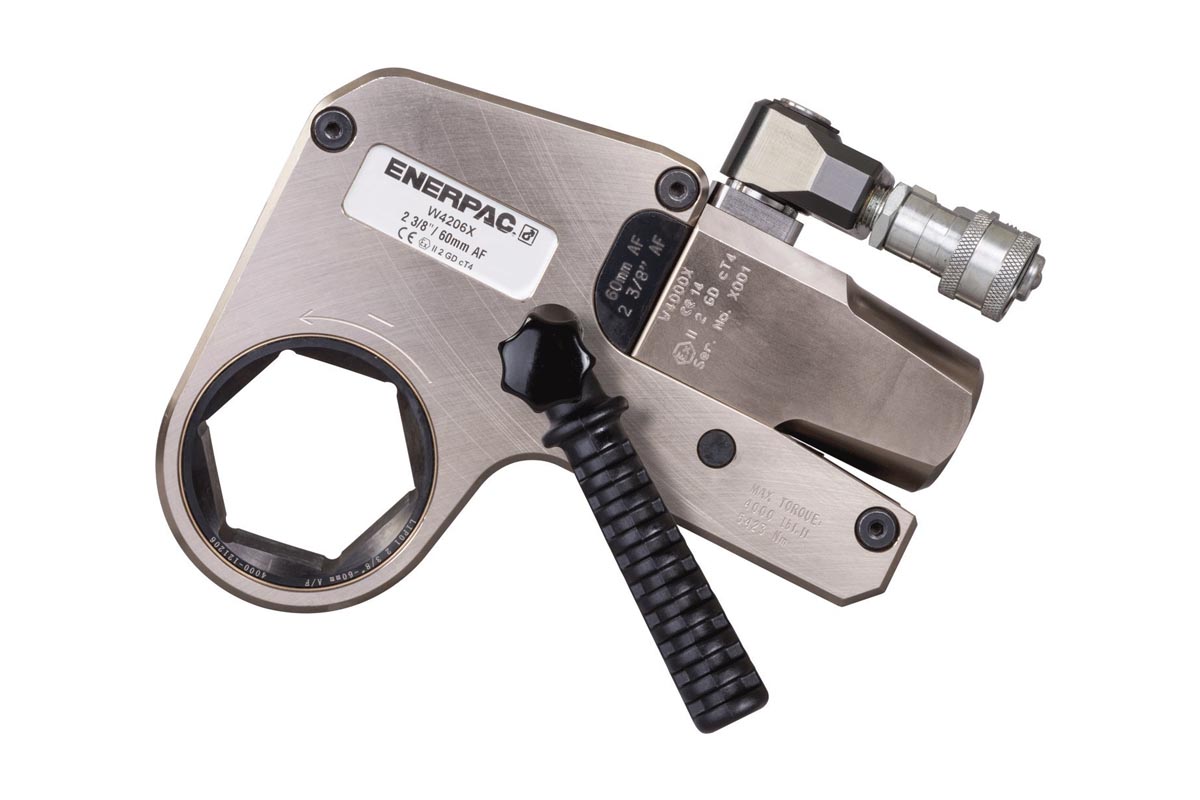
The hydraulic torque wrench is the reimagined and heavy-duty version of the traditional handheld wrench. When the bolts are huge and a job requires precision torque at higher levels than normal, the power of the hydraulic torque wrench makes tightening and loosening easier. The wrench can work in direct contact with the nut or in tandem with an impact socket. Buying one of these types of torque wrenches might require going through an industrial supplier. They can be incredibly lightweight and quiet to use, with ideal results on well-lubricated fasteners and present accurate torque levels.
Best For: Use with larger bolts or applications that require torque accuracy at high levels.
Our Recommendation: Enerpac W4000X Hydraulic Torque Wrench at Enerpac.com for $4,427.
The high-end Enerpac belongs to the brand’s trusted W-series tools and offers a low-profile hexagon feature.
7. Deflecting Beam Torque Wrench
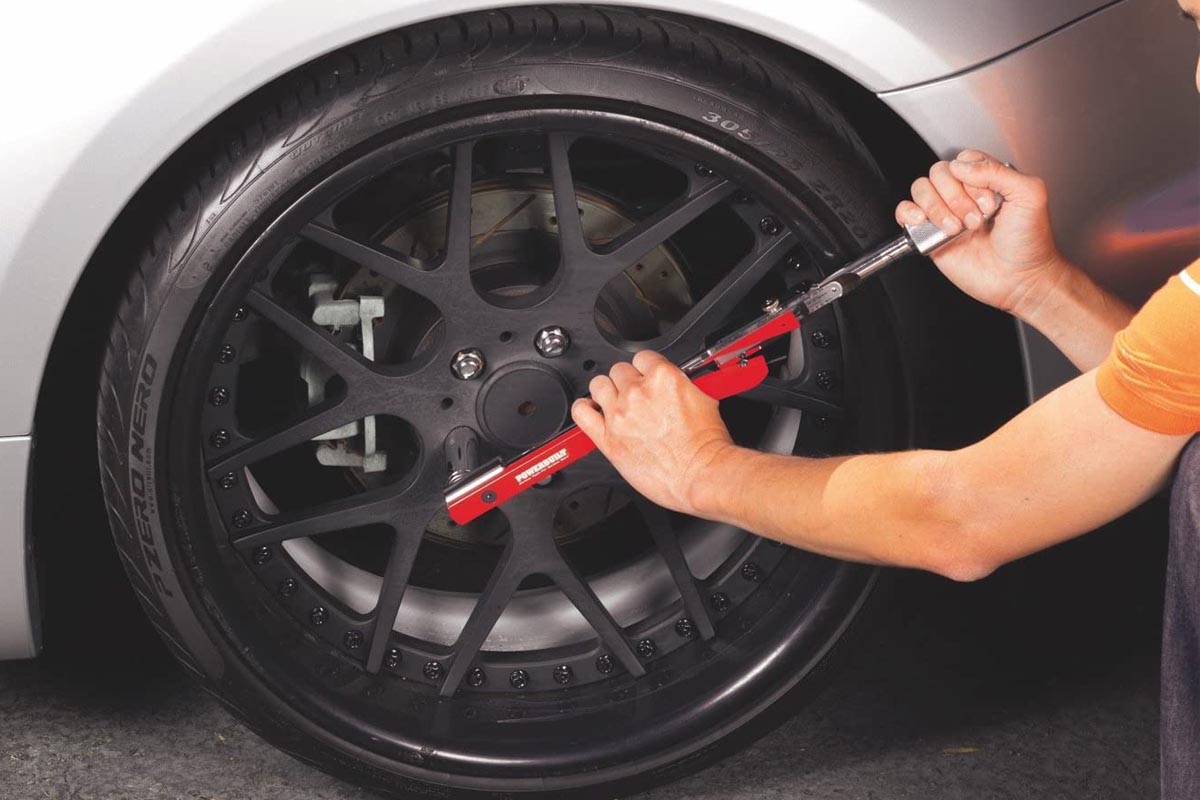
Also known as the dual-signal deflecting beam torque wrench, this tool is designed with a dual-trip mechanism that offers a releasing indicator pin along with visual and audible signals used for reading torque levels. In addition, it provides both audio and visual feedback. The torque pressure applies to the deflecting beams rather than the coil springs typically used in torque wrench design, which some suggest leads these wrenches to outlive their traditional counterparts. Others believe the deflecting beam torque wrenches offer more consistent readings. Patented by Warren & Brown Tools in 1948, this design continues to be a go-to for many garage enthusiasts.
Best For: More accurate torque readings over an increased lifespan.
Our Recommendation: Powerbuilt 649972 ½-Inch Drive Deflecting Beam Torque Wrench at Amazon for $94.99.
If you’re ready to add a deflecting beam torque wrench to your tool box, this one has an audible and visual toque indicator and a range of 20 to 220 foot-pounds. It also comes with a calibration certificate and a handy hard case for storage.
8. No-Hub Torque Wrench
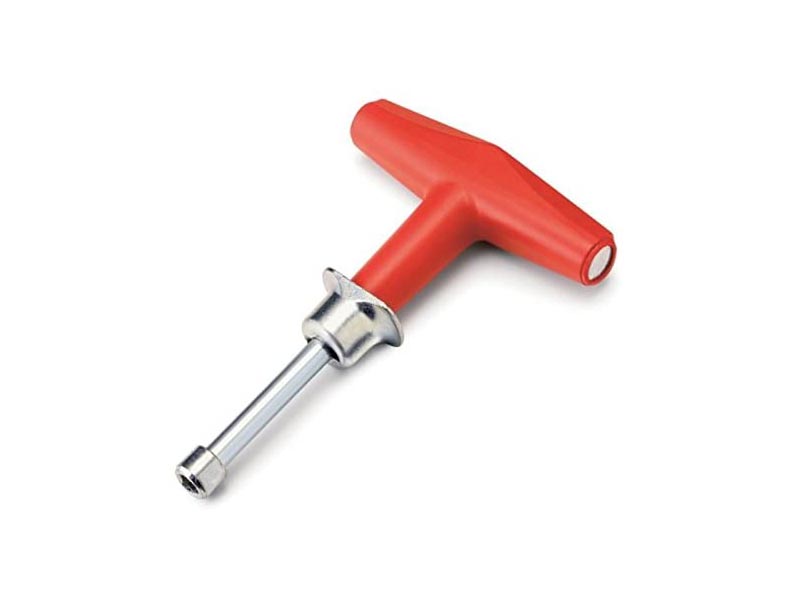
The no-hub torque wrench is ideal for plumbers’ and pipe fitters’ work on couplings, pipe installation, and no-hub cast-iron work like installing soil pipes. This commonly T-shaped handle on this wrench is easy to use in various environments and provides a high degree of accuracy with torque pressures. In the plumbing world, too much or too little torque when connecting pipes translates to leaks, so this is an absolute game-changer for the job.
Best For: Plumbing or pipe fitting work when leaks are possible but undesirable, or when working with no-hub fittings.
Our Recommendation: RIDGID 31410 902 Torque Wrench at Amazon for $50.11.
This RIDGID toque wrench has a fast ratchet action, click indicator, and includes a lifetime warranty.
